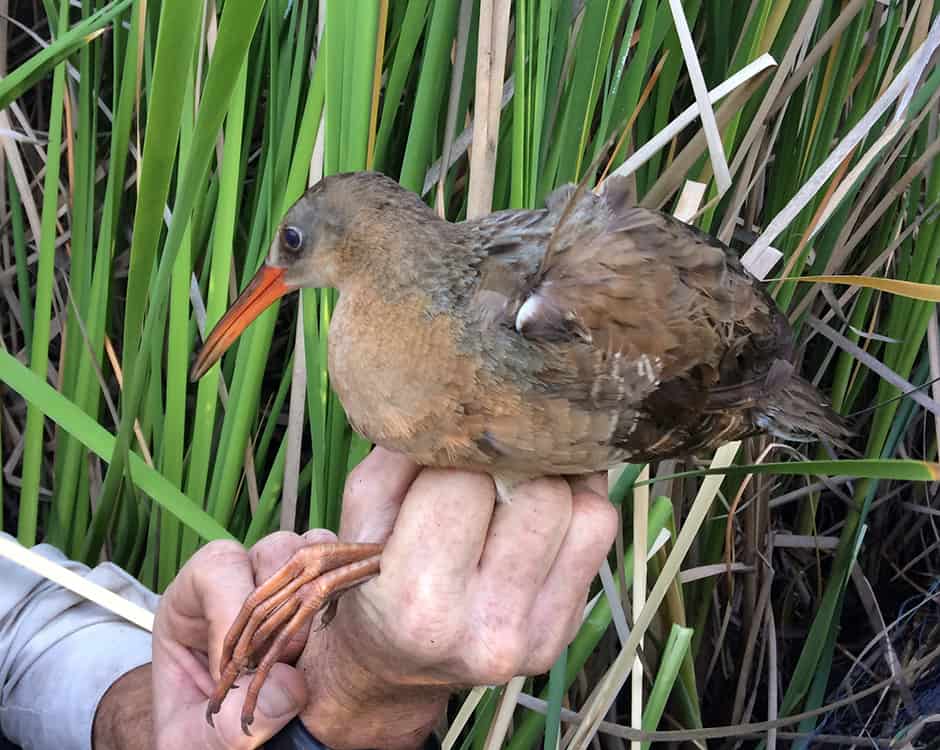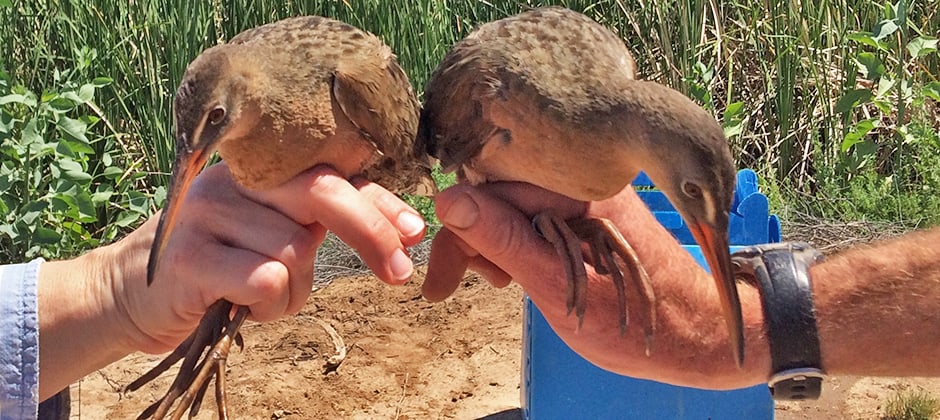Share this article
Military bases can help protect marsh birds
A handful of military bases around the United States could play an outsized role in marsh bird conservation.
“Our models provide some tangible predictions for which sites are the most important for most species but also which bases are not likely to be important for most species,” said Bryan Stevens, a research scientist at the University of Idaho and the lead author of a study published recently in the Journal of Environmental Management.
The study is part of larger research attempting to get a better grasp on the optimal environments for these secretive birds. They have built statistical models and using field data collected across the range of various bird species to predict suitable habitat types.
For this study, they focused on military installations in particular. The U.S. Department of Defense controls around 29 million acres of land in the continental U.S., according to Stevens — much of which is close to coasts or near major wetland areas.
“There’s the possibility that military installations could harbor a lot of important habitats for birds,” he said.
The military wanted to see which bases might be likely to hold suitable habitats for these species so it can write better species management plans for individual bases. If lands provide marsh birds habitat, they would want to focus on conserving them. If not, plans can be geared more toward other species that might be on the bases.
He and colleague Courtney Conway from the U.S. Geological Survey set out to find which of nearly 500 U.S. military installations may have the most suitable habitat for a dozen or so species of marsh birds, including tiny black rails (Laterallus jamaicensis), clapper rails (Rallus crepitans), Virginia rails (Rallus limicola), American bitterns (Botaurus lentiginosus) and common gallinules (Gallinula galeata).
Their models showed that the most important habitats for these birds tend to be isolated to less than a half-dozen bases, mostly concentrated in southeastern states.

A male Yuma Ridgway’s rail, one of a number of secretive marsh birds researchers focused on. ©Bryan Stevens
Most of the quality habitat for 75% of the bird species was found on five or fewer bases, Stevens said.
Three installations that predicted for secretive marsh bird habitats were Fort Stewart Army Base in Georgia, Dare County Bombing Range in North Carolina and the U.S. Marine Corps Base Camp Lejeune in North Carolina.
“According to our model predictions, those bases were all ranked in the top five sites for five different species,” Stevens said.
The remaining 25% of predicted suitable habitats occurred at 10 or less bases, the researchers found.
He said that further studies need to be conducted on these areas since the researchers only looked at breeding seasons, when these secretive birds are easier to detect. There could be more wintering habitats suitable for these marsh birds on additional military bases that are currently unknown.
He also said that future studies should validate these model predictions with on-the-ground field sampling to make sure that marsh birds are using areas predicted to have quality habitats.
Header Image: A breeding pair of Yuma Ridgway's rails (Rallus obsoletus yumanensis) caught during fieldwork in Phoenix, Ariz. ©Bryan Stevens








